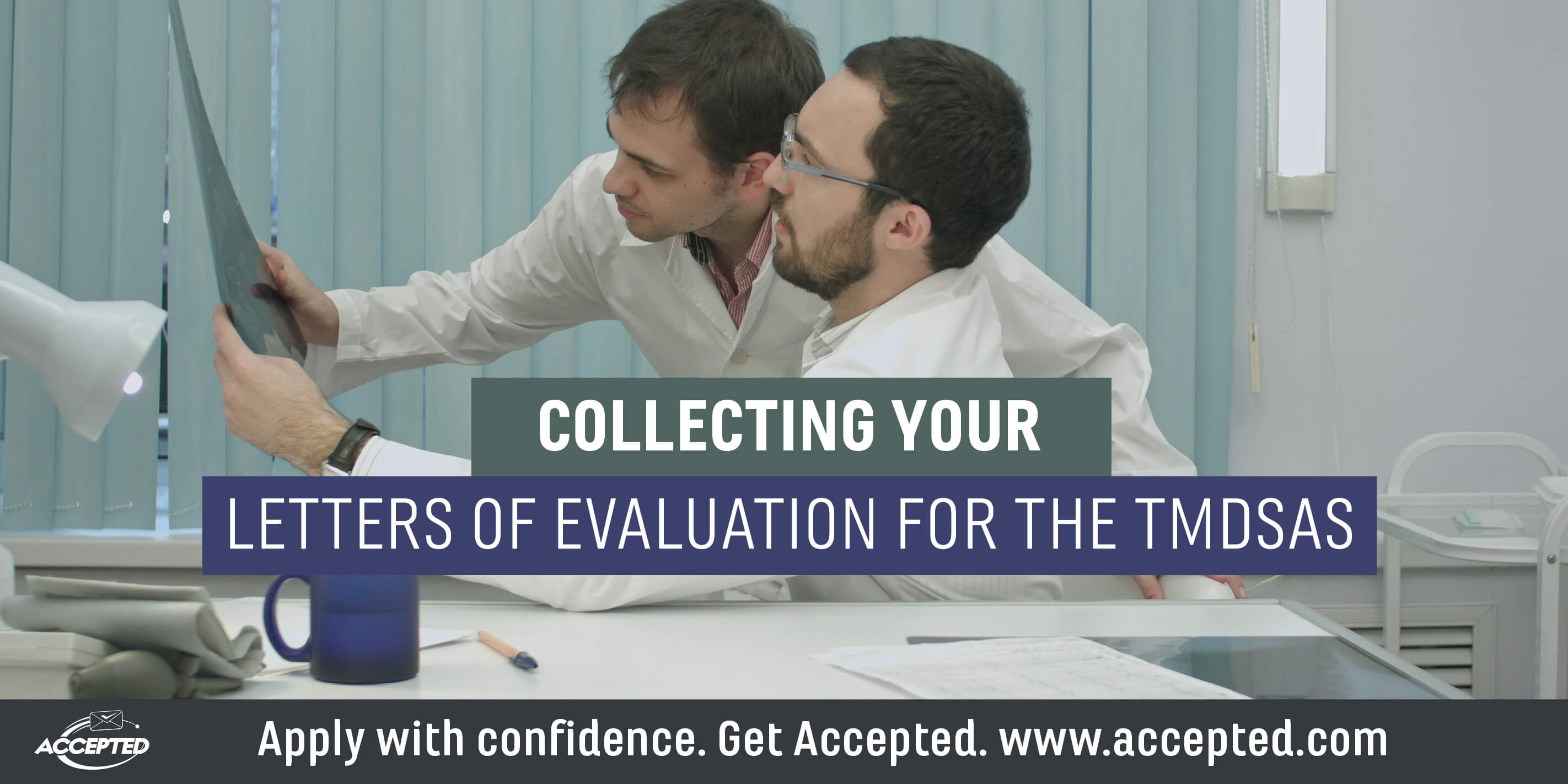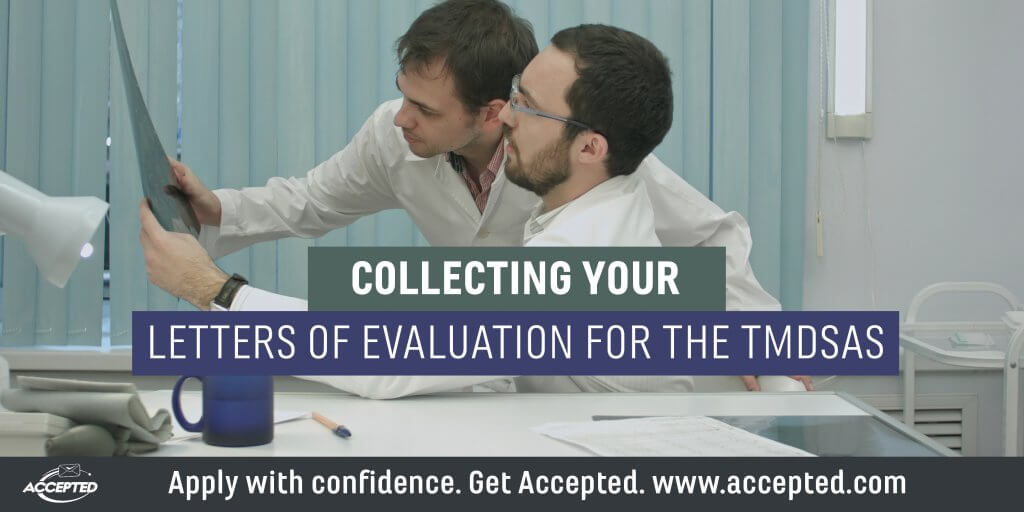

There are two options when submitting letters of evaluation to TMDSAS. They request either a committee letter or three individual letters of recommendation. For the committee letter, they will accept three different formats: a committee letter that introduces and includes an unlimited number of letters, a committee letter that includes quotes and excerpts from the letters but may not contain the letters themselves and a packet with an unlimited number of letters and no committee letter. For the second option, they require three letters of recommendation. They recommend that the letters be from professors who have taught you, but will accept letters from employers, mentors or advisors. They will allow you to submit a fourth optional individual letter, but if you want to submit more than four letters, you have to contact each individual school. TMDSAS will not accept more than four letters of recommendation on your behalf.
To get started:
1. Decide which format you would prefer.
If you have more than four letters of evaluation, I recommend that you select the committee letter option. Even if your school does not provide a committee letter of its own, TMDSAS will accept an unlimited number of letters if they are sent in a packet from your premed advising office.
2. Contact your letters writers.
Determine whom you would like to ask for letters. Only select professors from whom you received an A in their class because they will have to evaluate you based on your performance. It’s best to ask the people who know you well enough to write a compelling letter. Reach out to each person. If possible, meet with them in person. Ask each professor or mentor if they can provide you with a “strong” letter of recommendation. After you receive their responses, you can reply that you are preparing a letter packet to help them write the letter and that you will share it with them on a date you specify.
3. List the details about your letter writers on TMDSAS.
You will need to include the name of your letter writer, describe your relationship, identify the method of submission (direct upload to their site, Interfolio or snail mail) and designate whether the letter is confidential or not. You will need to complete this step first. TMDSAS will not accept any letters on your behalf until you have provided them with this information. I recommend that you do waive your right of access to the letters.
4. Provide each letter writer with a packet.
To avoid any confusion, I recommend providing your writers with a packet after you have shared their information on the TMDSAS application. TMDSAS will not accept any letters on your behalf until you have completed that step. In your packet, include:
• Cover letter with instructions on how to submit the letter
• An updated copy of your CV or resume
• Final draft of your personal statement
• A list of bullet points of information that might be useful to them (for example, the grade you earned in their course, any projects you completed in their lab, or any significant accomplishments that would be helpful for them to know about that may be related to why you’re applying to medical school)
• A copy of your transcript, if helpful
5. If needed, send friendly reminders to your letter writers.
Give each letter writer a deadline that is earlier than your actual final deadline for the letters. During this process, it’s best not to take anything personally. Be friendly and persistent about sending reminders. By providing an early deadline to letter writers, hopefully you will be safeguarding yourself from unnecessary stress.
Your application will not be marked complete until all letters of evaluation that you have designated on the TMDSAS application have been received. Make sure that you give yourself enough time to compete each of the steps recommended above. It can be considered rude to give your letter writers little to no time to submit their evaluations. Start early, anticipate challenges and plan ahead.
For more assistance crafting a TMDSAS application that will get you Accepted, contact me or one of my colleagues at Accepted.
 Alicia McNease Nimonkar is an Accepted advisor and editor specializing in healthcare admissions. Prior to joining Accepted, Alicia worked for five years as Student Advisor at UC Davis’ postbac program where she both evaluated applications and advised students applying successfully to med school and related programs. Want Alicia to help you get accepted? Click here to get in touch!
Alicia McNease Nimonkar is an Accepted advisor and editor specializing in healthcare admissions. Prior to joining Accepted, Alicia worked for five years as Student Advisor at UC Davis’ postbac program where she both evaluated applications and advised students applying successfully to med school and related programs. Want Alicia to help you get accepted? Click here to get in touch!
Related Resources:
• How to Get Really Great Recommendations, a podcast episode
• What Does an Excellent Medical School Letter of Recommendation Include?
• Writing Your Essays for the TMDSAS (Texas Medical and Dental Schools Application Service)
The post Collecting Letters of Evaluation for the TMDSAS appeared first on Accepted Admissions Blog.


No comments:
Post a Comment